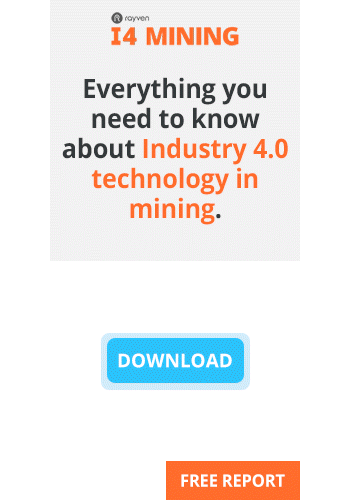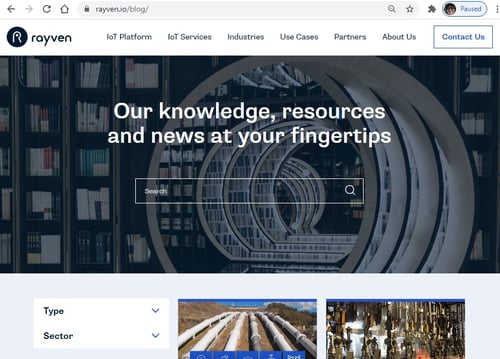The Mining sector's Industry 4.0 opportunity
Blog
Mining’s COVID-powered path to Industry 4.0-status.
In recent years, miners have been at the vanguard of technology adoption. Many firms have embraced automation and novel ‘smart mining’ technologies, however recent AI advances, old fleets and the need to electrify assets means that many operations, processes, and approaches must be looked at afresh to lower CO2e and increase tonnage.
COVID-19 forced many miners to move faster. Some operations required the rapid setting up of new remote work capabilities, saw the implementation of remote control rooms and operational centres, as well as relied on the further use of autonomous fleets to undertake new roles.
Whilst the long-term impact of the pandemic is far from certain, the process of change that it has begun is unlikely to stop until entire operations have been put under the microscope to see if there are efficiency savings and optimisations to be found that will enhance profitability and short-to-long-term success.
Immediate efficiency savings and yield increases can be simply and rapidly achieved through the adoption of intelligent Industry 4.0 technologies that harness the power of machine learning to analyze large data sets (in real-time) and then direct manual optimizations or AI-led interventions.
Using sustainability solutions built on a Sustainability Performance Platform (SPP), miners can drill-down and identify individual assets that might be causing operational problems today, predict those that will tomorrow, and provide decision-makers with a true single source of truth and the means to analyze and de-risk their operations like never before-in real-time -so that they can achieve critical strategic and operational goals.
Not only this, but the technology also enables the sector to integrate all real-time and historical data sources (and leverage new ones); guarantee data completeness and accuracy via machine learning; and then apply adaptive and predictive analytics to give senior-management the insights they need to design a roadmap that plots their path from miners to commodity providers, all whilst managing and minimizing environmental and workforce harm, successfully.
Business case: start at I3.5 and move to I4.
As with any novel technologies, making the business case is often the most difficult part of getting a solution off the ground: there’s far too much cost, risk and uncertainty involved; and it’s always going to be a best guess as to how it will perform in that precise environment.
The safest way for the mining sector to circumvent and mitigate these problems is to run low-cost, rapidly-deployable pilot programs. By identifying a precise use case for the technology (that relates to a clear, measurable business goal), deploying only the technology necessary to determine the various variables’ impact on the businesses bottom-line and then directing optimizations from the insights, it is possible for a project be able to demonstrate a clear, measurable ROI rapidly.
From there, as long as the technology is built with scalability in mind, it will be easy to compound the benefits by capitalizing and extending the solutions by growing the solution across operations to meet other business problems/goals.
Within the mining sector, there’s key ‘zero’ measures (zero waste, zero harm, and zero zero carbon) that can be applied to different scenarios and through that lens, the business case may be easy to make.
To achieve zero measures, however, it may be necessary to think laterally about sustainability solutions and Industry 4.0 technology adoption. For example, a common place within the mining sector to start is with predictive maintenance on plant. Whilst improving asset performance is always likely to be of benefit by improving uptime (which directly relates to productivity), it’s also likely to be closely tied to zero harm measures by preventing catastrophic, hazardous failures.
Cited results from implementing a predictive maintenance regime within the mining sector:
McKinsey ‘Mining Productivity Index’ has stated that they’ve identified operating efficiency improvements amounting to 70% of output due to breakdowns and stalled production.
PwC ‘Balancing Uptime and Working Capital: Maintenance and Inventory Strategies in Mining’ found that effective condition monitoring of critical equipment can reduce maintenance spend by 14%.
I4 Mining’s solutions have lowered cost of maintenance on key plant by 9% and decreased unscheduled downtimes by 63%.
I4 Mining is a sustainability technology provider to the mining sector, offering ready-to-deploy ESG solutions that help miners to succeed both strategically and operationally without ever getting in the way of good business.
Our solutions enable you to easily develop strategies, deliver accurate sustainability metrics and reports in real-time, improve sustainability and business performance, as well as make predictive analytics and forecasts part of your everyday so that you can reduce risks and optimise from mine-to-market.
Speak to us today to book a demo and discover how you can get started on your digital sustainability journey.
Want to know about industrial AI + IoT more broadly?
If you'd like to find out more about the technology that underpins all of our digital mining solutions, other industrial uses of AI + IoT, or are eager to get into the detail of precisely what AI and IoT technology are then visit the Rayven blog.




